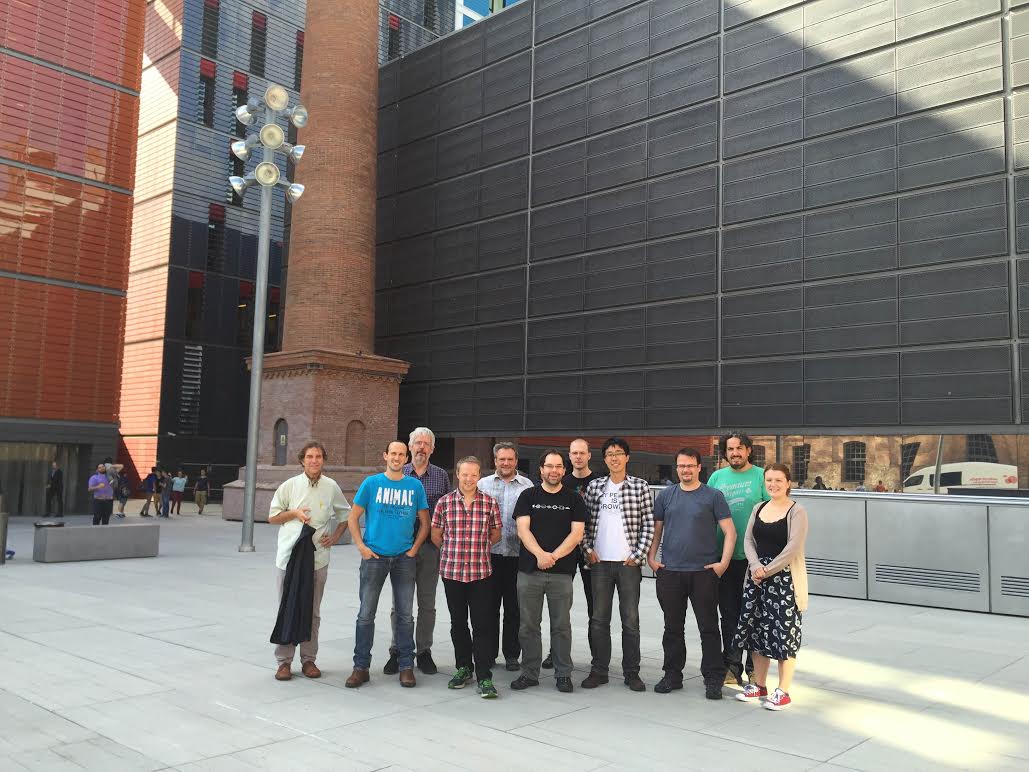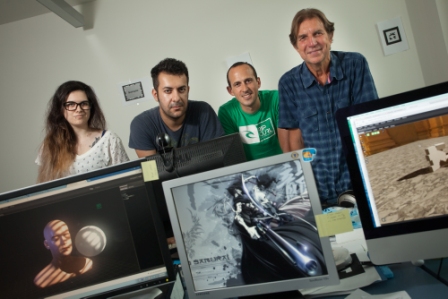Major breakthroughs in digital cinema achieved in IMPART
Major breakthroughs in digital cinema achieved in IMPART
A project of the 7th Framework Programme, coordinated by Josep Blat, head of the Interactive Technologies Research Group, carried out by six European institutions over the last three years.
On 8 October, IMPART held its final project meeting on UPF’s Poblenou campus, three years after it began. IMPART, an acronym for Intelligent Management Platform for Advanced Real-Time media processes, is a European project of the 7th Framework Programme of the European Union, provided with 3.6 million euros, in the field of digital cinema and Big Data, coordinated by the Interactive Technologies Research Group (GTI), a TECNIO group led by Josep Blat at UPF’s Department of Information and Communication Technologies (DTIC).

The overall aim of the project was to improve the handling of the huge quantity of data generated around a film (hundreds of terabytes, and increasing) through their understanding and the generation of metadata that enable more intelligent handling of the data.
The project Consortium enjoyed the participation of six members coordinated by UPF. In addition to the GTI, the consortium involves the universities of Technology of Brno (Czech Republic), Surrey (UK), Thessaloniki (Greece), and British firms Filmlight Ltd., winner of several technology Oscars and Double Negative Ltd., one of the most important digital effects companies in Europe which has received numerous Oscar and BAFTA awards for visual effects for Inception; BAFTA award for visual effects for Harry Potter and the Deathly Hallows Part 2.
Contributions by members of the IMPART consortium
During the meeting, each member of the consortium presented the breakthroughs achieved in the IMPART project.
With regard to the improved handling of the data generated around a film, Pompeu Fabra University showed novel visualization of the results in a web 3D environment through an integrated and concrete paradigm supporting better qualitative assessment.
The University of Surrey team presented algorithms for the 3D dynamic reconstruction of buildings, architectural elements and furniture on film sets using scanners, spherical images and multiple cameras, and the quality evaluation of configurations and results.

The team from Brno University of Technology (Czech Republic) presented the architecture and algorithms to accelerate (with gains of orders of magnitude in several cases) reconstruction and improve the analysis of quality, thus possessing the information and being able to take appropriate decisions during filming and not afterwards having to film again or solve post-production problems, both of which are highly costly solutions.
The team of the Aristotle University of Thessaloniki (Greece) showed the results achieved in human action recognition and its importance on the scene taken from videos from several cameras with efficient anthropocentric semantic analysis required by the large scale of the data that need processing.
Double Negative, one of the biggest post-production companies in Europe, has integrated the project results into its Jigsaw software. At the final meeting of the project its advantages for film production were discussed.
In turn, Filmlight explained the technical improvements carried out with IMPART which it has introduced in the systems that the company supplies to the audiovisual industry: Flip, Baselight and Flux.
The whole team then prepared a showcase for the final results of the project.
